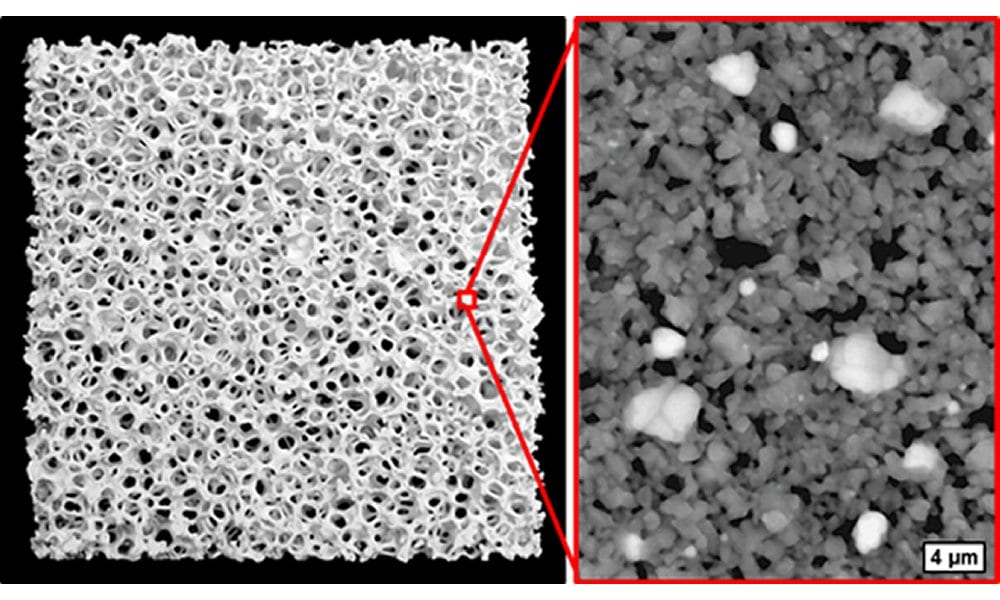In order to meet the challenges of an increasing share of renewable energy sources and their efficient utilization, new concepts for (thermal) energy storage and climatization applications are mandatory. Currently, solutions based on small molecule (e. g. water) adsorption/desorption processes into porous compounds, for example zeolites (microporous alumosilicate adsorbents; pore size in nm range), are a focus of research. These ad‑/desorption cycles involve heat transformation processes, which can be harnessed in thermal energy storage or climatization applications.
The general drawback of this concept is the efficient transportation of heat, as well as the small molecule adsorptive into/out of the pulverulent, thermally low conductive microporous compound. Solutions of this problem usually involve the coating of the adsorbents onto suitable (plate) heat exchangers. However, these supports are inactive towards ad-/desorption processes and provide only a limited surface area for active coatings. Therefore, supports featuring a high specific surface to volume and weight ratio are of special interest.
These requirements are fulfilled by open-cellular foam structures. In addition, foams provide an optimal gas flow behavior, which allows an efficient transportation of the small molecule adsorptive to the active material.
Open-cellular ceramic foams are easily prepared by the coating of polymer foam templates with a mixture of a ceramic powder and water (slurry) with a subsequent thermal treatment to burn out the template and sinter the ceramic powder into a mechanically stable foam structure. As the sintered ceramic replicates the structure of the polymeric foam template the process is usually addressed as “replica process”, or after its inventor: “Schwartzwalder process”.
Ceramic foams with a high thermal conductivity are interesting support structures for microporous compounds utilized in the above mentioned applications. They combine the advantages of the irregular foam geometry like an optimized adsorptive transportation and high specific surface area with a high conducting strut material for an efficient heat transportation. Ceramic materials possessing a high thermal conductivity are silicon carbide (SiC) or aluminum nitride (AlN), for example. However, the slurry processing involves organic solvents (in case of water-sensitive AlN) and the sintering of these materials into a (cellular) ceramic part requires high temperatures and sintering aids reducing the final thermal conductivity (SiO2 bonded SiC).
Betke and co-workers of the University of Magdeburg, Germany, have developed a process for the fabrication of open-cellular aluminum nitride foams by the replica technique avoiding the usage of organic solvents. A surface passivation technique has been adapted to stabilize the water sensitive AlN raw material in order to prevent its decomposition in the aqueous slurry. The sintering of the foams could be performed in a conventional resistance-heated furnace at a comparatively low temperature of 1650 °C. The resulting AlN foams show a high porosity of 92% and consequently a favorable surface to weight ratio. Their thermal conductivity is superior to conventional alumina or SiO2/SiC foams. The influence of the residual porosity present within the AlN strut material as well as oxygen contamination of the AlN material arising from the slurry processing and sintering process have been investigated and based on the results even better performing AlN foams will be developed.

















